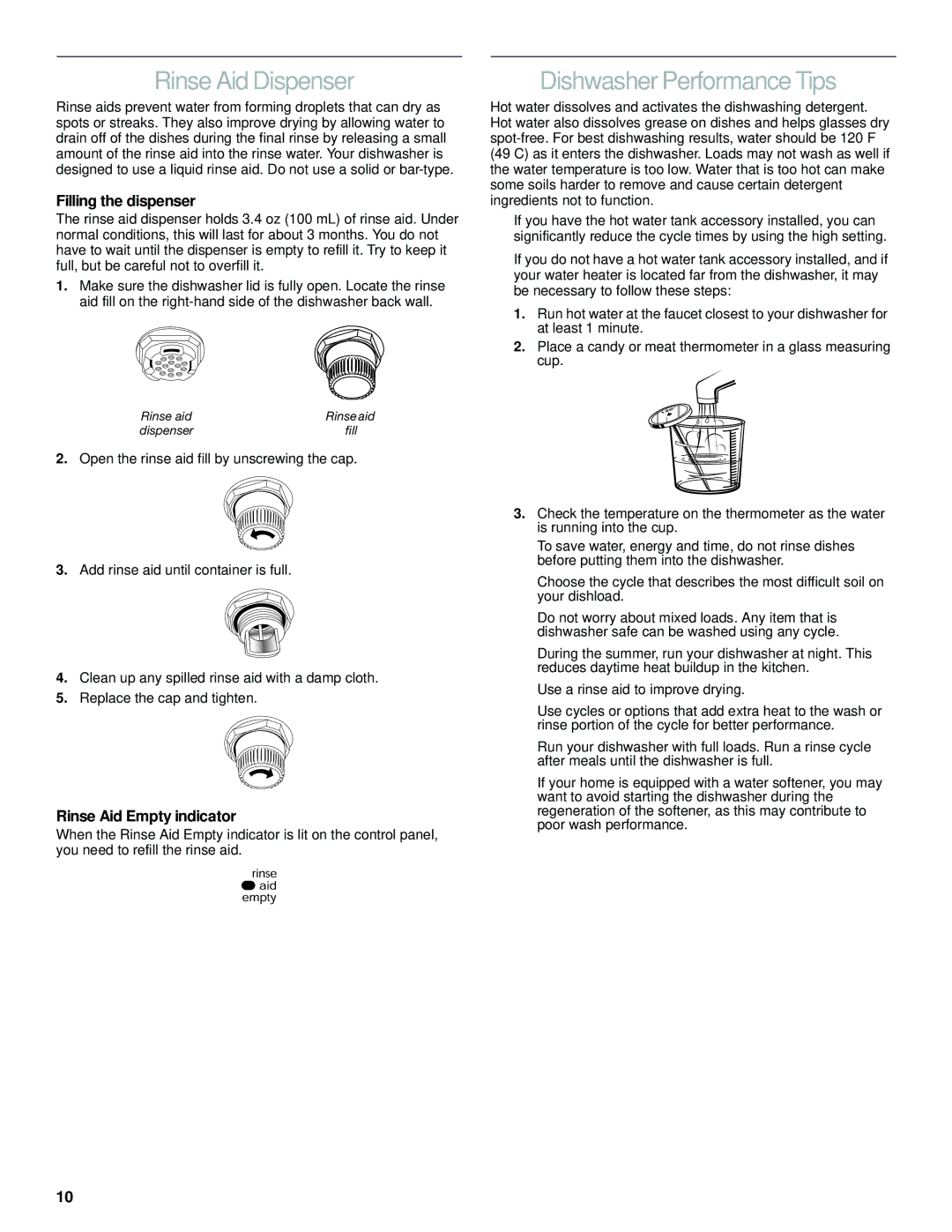KIDS01EK specifications
The KitchenAid KIDS01EK is an innovative and robust kitchen appliance designed specifically for the budding young chefs in your household. This product stands out not only for its functional design but also for its appealing aesthetics, making cooking an exciting adventure for kids.One of the primary features of the KitchenAid KIDS01EK is its compact size, which is perfect for little hands and limited kitchen space. The appliance is designed to be lightweight and easy to handle, allowing kids to maneuver and use it with confidence. Its vibrant color choices add a fun element to the kitchen, encouraging children to engage in the cooking process and experiment with recipes.
Equipped with a powerful motor, the KIDS01EK can handle a variety of tasks, from mixing ingredients to kneading dough. The appliance features multiple speed settings, enabling young chefs to choose the right speed for their specific culinary needs—whether it’s gentle mixing for delicate batters or powerful whipping for cream. The inclusion of a variety of attachments, such as a traditional mixing bowl and specially designed whisks and hooks, allows for versatility in cooking and baking.
Safety is also a priority with the KitchenAid KIDS01EK. The design incorporates child-safe features, including a stable base to prevent tipping and a bowl-locking system that keeps everything securely in place during operation. Additionally, the appliance is easy to clean, with removable parts that are dishwasher safe, ensuring that post-cooking cleanup is hassle-free for both kids and parents alike.
Another notable aspect of the KIDS01EK is its educational potential. The product encourages children to develop essential skills in the kitchen, such as measuring ingredients, following recipes, and understanding the science behind cooking. This hands-on experience not only fosters creativity but also builds confidence and independence in young cooks.
In summary, the KitchenAid KIDS01EK is an ideal kitchen companion for kids who have a passion for cooking. Its combination of safety features, ease of use, and vibrant design makes it a wonderful introduction to culinary arts, offering a fun and engaging way for children to learn valuable kitchen skills while creating delicious meals.

